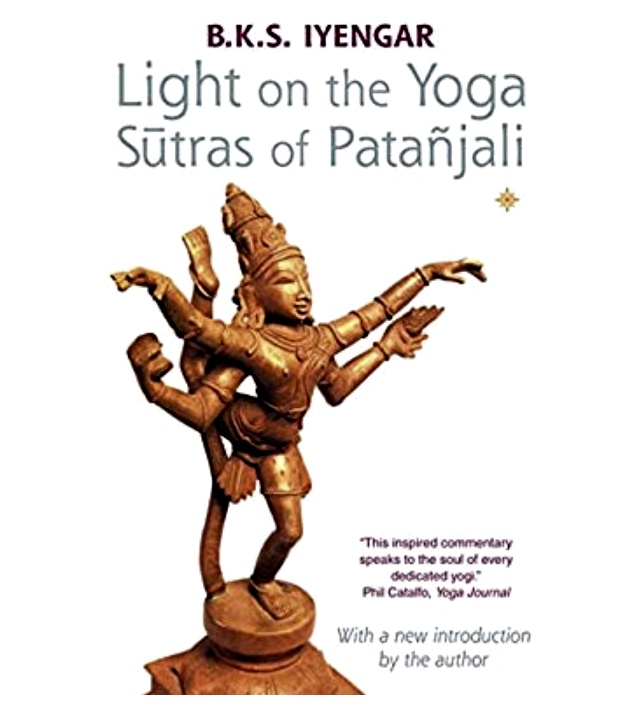The Belle of Bellur: Four Days of Gratitude with Abhijata Iyengar - Day 3
Yoga Connections
“If the foundation is firm, the building can withstand calamities. The practice of Yoga is the foundation, so that the Self is not shaken under any circumstances.”~B.K.S. Iyengar
Yoga is a metaphor for life and living. BKS Iyengar made the study of asana his life and gave us a library of learning to light our path, along with his lineage after him who have brought their insights into his work, and many other devoted instructors. He took as many as 40 years, Abhijata explained, to find a single word to describe a particular instruction. Abhijata distinguished the difference between her grandfather’s yoga practice and a student of Iyengar Yoga. BKS Iyengar studied with a teacher for only a few years. He spent the rest of his time in self study embodying the Sutres of Sage Patañjali :
Sutre 1:14 - sah tu dirgha-kaala-nairantarya-satkaaraa-sevito dhruddha-bhoomi-ha
Guruji transcribed this Sutra in Light On the yoga Sutras of Pantanjali as “Long, uninterrupted, alert practice is the firm foundation for retraining the fluctuations.” We have no concept of the decades of uninterrupted, discipline and devotion. We are the lucky recipients of it. As we celebrate his 102nd birthday on December 14th hold on to that thought.
Guruji has been quoted often as saying, “The body is my Temple. Asana are my prayers.” Asana were his prayers, so much so, he developed a specific Krama or sequence and order of asana to build a foundation for Tapas (self-discipline) and Svadyaya (self-study) and Isvara Pranidhanani (devotion). He also established the Krama of words to articulate instruction down to a level of subtly that brings a depth of unconscious to the surface that is truly remarkable —all in a systematic and sequential manner.
To appreciate why Krama is a crucial component of Iyengar Yoga, Abhijata gave a relatable example: we would never force a child who has just learned to walk to cross a wall or balance beam on their own. We have to build unity of mind and body, without it stress happens. Yoga means union. Abhijata explained interrupting children doing a puzzle or math problem can be very disruptive. They are focused, but can’t handle disruption. It is this kind of singularity of focus that Iyengar Yoga seeks to cultivate to a higher level. It is why Iyengar instructors do not teach a pose until the student has developed the necessary foundations to work in that asana safely and properly.
Stress is a word that is top-of-mind in this pandemic. It has come up often during the Bellur Iyengar Yoga Workshop. Upon research, etymologically, the word may be derived from the Old French word estrece, which means narrow or oppressed. Calamity like the pandemic has brought stress. There is a sense of chaos with fear of the unknown coupled with the pains of confinement and restriction. These stressful emotions can come up in difficult poses like Sirsasana, headstand. There can also be stiffness of the mind and body when attempting a forward bend or revolved pose. It can be a pre-existing condition or can come as a result of the idea of a difficult asana. Stiffness causes stress. However, Iyengar Practitioners develop more flexibility and freedom in both mind and body. They can stay completely present in a pose. Self-adjusting, pausing to evaluate the response throughout the body and mind, and continue to work like that while exploring deeper and deeper aspects of the posture. All the while they can also remain calm and steady despite disruptions, uncertainty, chaos or calamity.
Students who go to an Iyengar Yoga class can evolve into Iyengar Yoga Practitioners. It requires dedicated study with Certified Iyengar Instructors, following explicit directions so proper cultivation can be established. Dedicated Abhyasa (uninterrupted practice) and Vairagya (detachment) in every aspect of Kriya Yoga (action of yoga): Tapas (self-discipline), Svayaya (self-study), Ishvara Pranidhanani (Surrender of oneself to God) follows as the student transitions into a practitioner. The level of experience they can reach is high, thanks to the foundation of Iyengar Yoga. For over seven decades, Guruji dug into every fiber of his being to create a rich fertile soil for yoga to thrive.
What a gift.
Namaste.













